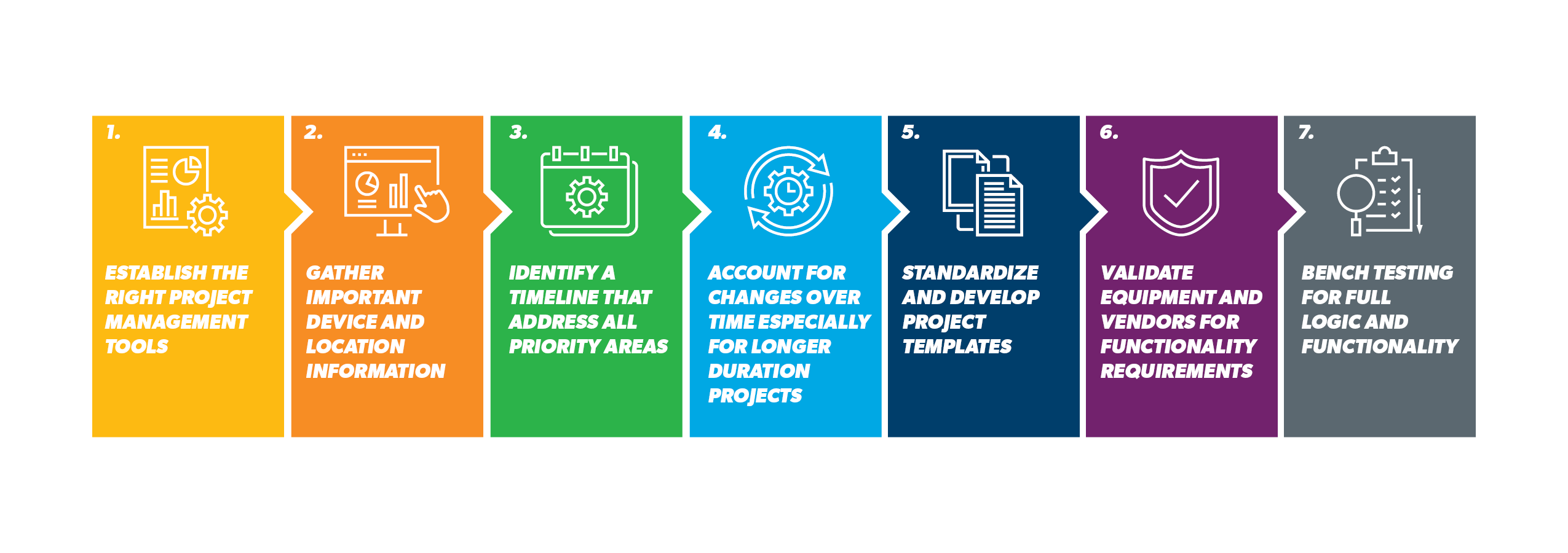Follow these preliminary steps for long-term grid modernization project success.

Modernizing the
distribution grid is crucial in helping utilities automate operation, increase visibility of system events, and improve network optimization and reliability. While implementing a modernization program is a great benefit to utilities, it is a significant undertaking that requires detailed planning. Following several key steps and practices will help overcome common challenges and set you up for greater success.
1. Establish the Right Project Management Tools
Managing a large-scale project like modernizing an entire distribution system requires having the right project management tools in place. It’s important to consider where you are going to collect, store, edit and view all the data and information necessary for the project. Accounting for areas like functionality, user-friendliness, and ease of extracting existing data is crucial when choosing a database for your unique project. It’s also imperative to properly coordinate project phases and responsibilities by identifying the locations and devices to be included and existing available infrastructure like an area’s cellular signal and established network.
2. Gather Important Device Information
Once you have and established project management process, the next step is to gather information on your chosen location and devices. You will need to consider procurement of equipment, which may require long lead times, as well as possible company policies to establish framework agreements with vendors. Physical device installation will need to be considered for both new locations and locations where there is currently legacy equipment protecting the circuit. Settings and communications will need to be developed for the devices, and all documentation and records must be finalized for the location. Efficiencies should always be a focus, but especially during large-scale projects, which can include identifying ways to minimize site visits, advanced location and device planning, and even communications signal testing.
3. Identify a Timeline that Addresses all Priority Areas
Developing a manageable timeline and identifying priorities can be challenging in long-term projects. Areas for focus should be problem circuits with poor reliability, circuits with visibility concerns for metering or event analysis data, or remote areas where reclosers and SCADA control would reduce truck rolls and improve restoration times. Procurement lead times can have a significant impact on timeline as well.
4. Account for Changes Over Time
Company processes, protection philosophies, and standards are all things that change over time. The longer the duration of the project, the more likely these things come into play. Understanding and discussing this throughout the project will allow you to stay ahead of these changes.
Changes in equipment is another important area of consideration. Whether it is for financial reasons to utilize new devices, or even just software or firmware updates to existing devices, this will most likely come into play on projects that span over many years. Whatever changes do need to take place, it is important to document and communicate a cut-off date for all groups who will be interacting with devices on both sides of the change.
5. Standardize and Develop Project Templates
Project standardization and templates can be a great way to increase efficiency and cost savings. Although template creation requires additional time up front to develop, even a small amount of time saved per application will make a big difference in large projects, where you may be developing hundreds or thousands of similar devices.
Consistency in applications also helps field personnel know and understand the devices they are interacting with, which means Testing and Commissioning efficiencies are greatly increased. Using these settings can help reduce the overall testing time and allow focus on functionality and the specific parameters that change from device to device.
6. Validate Equipment and Vendors
When determining what equipment will be used for system modernization, the validation and testing process is critical to ensure that the settings templates and documentation are developed to meet the device’s functionality requirements. New devices are often evaluated against detailed specification documents, which should account for physical ratings, logic capabilities, primary equipment compatibility, communication interfaces and protocols, as well as available indication and controls. It’s also crucial for the vendor of choice to be involved to provide software, instruction manuals, documentation, communication and firmware support, and more.
7. Bench Test
Bench testing should include a full logic and functionality test as well as a communications test back to the control center. If any issues are found during this process, templates will need to be refined before they are ready to be used and issued to the field. Testing cost should be accounted for when determining how many devices to include for template development and testing, as this is a comprehensive effort that can be expensive.
In addition, allocating adequate time to work through issues as they come up is critical. In many instances you may be waiting on responses from a vendor or firmware updates that could completely stall your template development and testing for months.
Lessons Learned
Ultimately, the goal of any distribution modernization program should be to provide greater visibility into the distribution system, greater functionality and control, and in turn, better network resiliency and reliability. We have found these approaches to be helpful for supporting a large-scale distribution modernization effort for a major utility. Following these steps can help ensure an efficient and successful implementation of a distribution modernization program.

